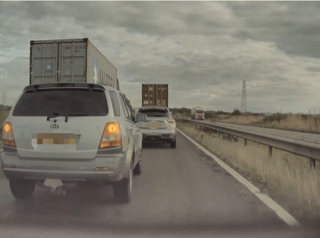A cyclist has been found guilty of bodily harm by ‘wanton and furious driving’ and sentenced to 18 months in a young offender’s institution.
Charlie Alliston, then 18, was riding a so-called ‘fixie’ or ‘fixed-wheel’ bike, a type of track bicycle with no front brake, when he knocked over and killed a 44-year-old woman in East London. Fixie bikes are illegal for use on UK public roads.
He was cleared of manslaughter, but found guilty of the lesser charge, which has its origins in the laws pertaining to horses and carriages in the Victorian era.
Judge Wendy Thomas described Alliston as "an accident waiting to happen", while in a statement outside the court, Briggs’ widower, Matthew, called for a change in the law to allow for stricter sentences in such cases.
"To have to rely on either manslaughter at one end, or a Victorian law that doesn't even mention causing death at the other end, tells us there is a gap ", he said.
Paul Loughlin, a motoring law solicitor at the law firm, Stephensons, added: “Drivers of motor vehicles, whose behaviour behind the wheel leads to the death of a pedestrian – usually defined as ‘death by dangerous driving’ or ‘death by careless driving’ - can result in a fine, a custodial sentence of between a few months and 14 years and disqualification from operating a motor vehicle for a term or even for life.
“Death by dangerous driving and death by careless driving are not available to the courts when sentencing individuals who have caused the death of a pedestrian while using a bicycle.
“In the UK, these offences can only apply to a ‘mechanical vehicle’ and not to modes of transport powered directly by their operator. This means the courts cannot hand down longer custodial sentences and cannot ‘disqualify’ a cyclist from using a bike on the roads for any period of time.
“To make a direct comparison with this case; if a motorist were to take a vehicle that was either not roadworthy or not permitted for use on UK roads – much as Mr Alliston did with his ‘fixed gear’ track bike – this would be considered an ‘aggravating factor’ and would warrant a tougher sentence.
“Under such circumstances, I would expect a court to only consider a ‘death by dangerous driving’ charge against that driver and a custodial sentence of up to 14 years.
The original charge was of ‘wanton and furious driving’, a law dating back to the Victorian era, relating to horse drawn carriages.
“An alternative charge of manslaughter was only added alongside that later, clearly to allow for a more punitive sentence to be imposed,” continued Loughlin.
“The difference between the two sentences available to the court is considerable.
“While the former can only result in a maximum of two years custodial sentence, manslaughter carries a much more severe sentence – anything up to life in prison.
“As such, judges and juries in such cases are often reluctant to be overly punitive leaving only a sentence which critics would say is insufficient for the seriousness of the offence.
“Problems in relation to sentencing have led some – including the victim’s widower - to suggest that the law’s definitions around charges like ‘death by dangerous driving’ – and to whom they apply - should be revised.
“Equally, some have suggested a similar, but separate charge should be created specifically for such situations.”
























Login to comment
Comments
No comments have been made yet.